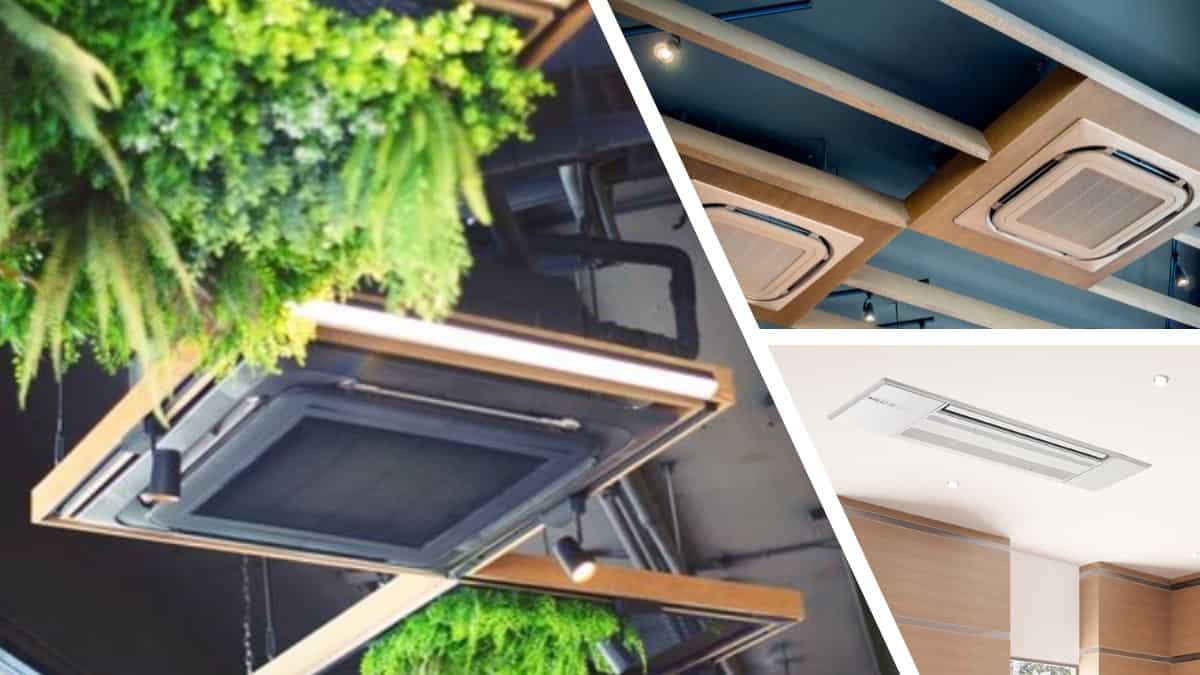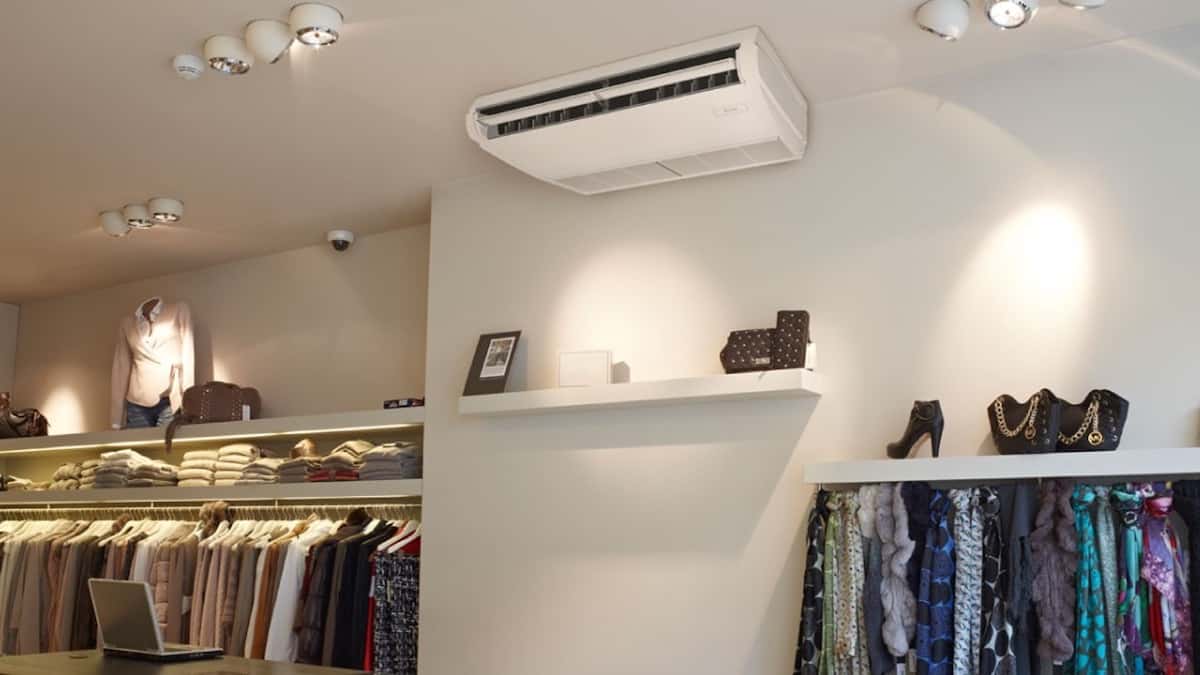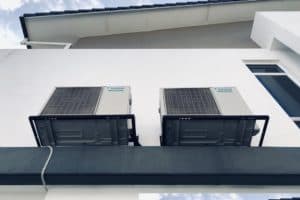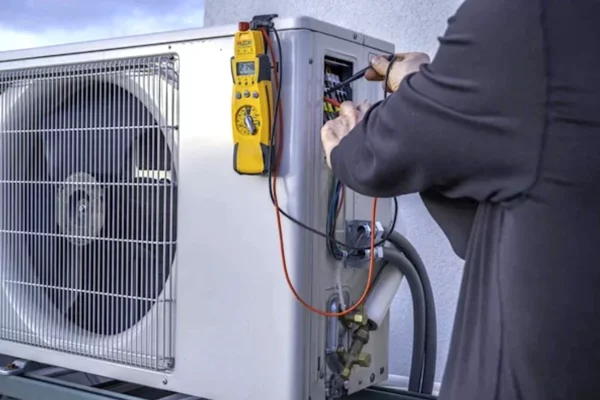5 Types of Mini Split Indoor Units (How to Choose)
Mini splits are getting popular nowadays. Many people are buying mini splits for their home. However, there are many types of mini split indoor units available to choose from. So, how do you pick the best one for your home?
The most common type of mini split indoor unit is the wall-mounted type. It is simple, affordable and reliable. Secondly, the ceiling cassette type of mini split indoor unit is a great alternative.
For people who like their mini splits to be concealed above the ceiling, the ceiling ducted type of mini split indoor unit is an excellent choice. Otherwise, the floor-mounted type of mini split indoor unit can be a solution.
If you need a mini split with a strong airflow and large capacity, the ceiling suspended type of mini split indoor unit is always a choice to make it happen.
In short, the 5 types of mini splits are:
- Wall-Mounted Mini Split
- Ceiling Cassette Mini Split
- Ceiling Ducted Mini Split
- Floor-Mounted Mini Split
- Ceiling Suspended Mini Split
Each type of mini split indoor unit has its own unique features and applications. Getting to know all of the available types of mini split indoor units is the key to choosing the best mini split for your home.
1. Wall-Mounted Mini Split

Wall-mounted mini splits are the most common type of mini split when it comes to the indoor unit or the air handler. By default, mini splits come with the wall-mounted type of indoor unit.
Most of the time, the lowest cooling capacity available in wall-mounted mini splits is 9,000 BTU.
Wall-mounted mini splits are the cheapest and most reliable. The installation is easy and quick. Most people prefer to use a wall-mounted mini split because it can be installed virtually anywhere in the house.
Meanwhile, other types of mini split such as ceiling cassette mini splits and ceiling ducted mini splits, have specific requirements.
Because wall-mounted mini splits sell the best, manufacturers tend to do more research and improvements on them. Thus, wall-mounted mini splits have the most models and variety for customers to choose from based on their preferences.
Furthermore, wall-mounted mini splits can have great looking. Some manufacturers have a dedicated series of wall-mounted mini splits that are aesthetically appealing. They often blend very well with the interior of the house.
What’s more, wall-mounted mini splits are known to be extremely quiet during operation, especially when running in low fan speed settings. Some of the lowest sound levels produced by a wall-mounted mini split are only around 22 dB (sounds like a whisper).
However, most wall-mounted mini splits are not available when the cooling capacity needed is beyond 24,000 BTU. Besides, the positioning of wall-mounted mini splits is more critical than other types of mini split.
For instance, wall-mounted mini splits are not advisable to be installed opposite of the bed because it is unhealthy to let cold air blow directly onto the human body for a prolonged period of time (eg: sleeping).
In addition, wall-mounted mini splits only have one airflow direction which makes their air circulation not as great as other types of mini split. But, a few golden rules of wall-mounted mini split placement can minimize the downfall.
Moreover, wall-mounted mini splits can’t have as great of a filter grade as ceiling ducted mini splits due to limited space within. Nonetheless, premium wall-mounted models do have sufficiently great filters than most other types of mini split.
2. Ceiling Cassette Mini Split

Ceiling cassette mini splits are the second most common type of mini split. The best thing about using a ceiling cassette type of mini split indoor unit is that air can be distributed evenly.
Similar to wall-mounted mini splits, the lowest cooling capacity available in ceiling cassette mini splits is also 9,000 BTU. However, they are uncommon.
Unlike wall-mounted mini splits, ceiling cassette mini splits often have 4-way air distribution. Sometimes, ceiling cassette mini splits can have 6-way or even 8-way air distribution, depending on the model.
Although the installation of ceiling cassette mini splits is not as flexible as wall-mounted mini splits, they are still fairly simple and straightforward. For instance, ceiling cassette mini splits can be installed at the center of the room, with or without a ceiling.
With a ceiling, ceiling cassette mini splits are concealed above the ceiling with only their front panel protruding out but flushing with the ceiling. This makes the room looks more elegant than if it is fitted with a wall-mounted type.
Without a ceiling, the front panel of ceiling mini splits can be painted to the preferred color and the refrigerant lines and wires that are supposed to be exposed can be covered with perforated trunking, making the entire setup seems invisible to the human eyes.

The front panel of ceiling cassette mini splits is removable or openable. Hence, their filter can be easily removed, cleaned and reinstalled.
However, a ceiling manhole must be present next to each ceiling cassette mini split so that in the future, repair or overhaul work is possible without having to cut the ceiling.
Nonetheless, ceiling cassette mini splits are as quiet as wall-mounted mini splits. However, they are usually slightly more expensive than wall-mounted mini splits.
Hence, ceiling cassette mini splits are often selected when the cooling capacity needed is 18,000 BTU or more.
3. Ceiling Ducted Mini Split

Not all mini splits are ductless. Ceiling ducted mini splits are a ducted type of mini split where components such as ducts, plenum boxes, grilles and diffusers are needed to complete the system.
Ceiling ducted mini splits are meant to provide the best-looking interior for homeowners and building owners. They can be nicely concealed above the ceiling and distribute air evenly through ductwork.
Hence, considering the ductwork, the overall cost of installing a ceiling ducted mini split is far more expensive than other types of mini split.
However, ceiling ducted mini splits offer the best air conditioning experience. Not only do they operate unimaginably quietly, but they also provide excellent comfort due to great air distribution and optimal airflow throw strength.
Excluding the cost, the downside of using a ceiling ducted mini split is that the maintenance work is difficult and costly at the same time. Ducts, grilles, plenum boxes and the unit itself are all concealed above the ceiling. Hence, a team of professionals is often needed to perform the cleaning work.
Not to mention, a ceiling manhole for service access is also required.
Nonetheless, depending on applications, not all ceiling ducted mini splits must be connected to long ductwork. When placed inside a bedroom, a short piece of duct is all that’s needed for a ceiling ducted mini split to perform.
Such a setup often can be seen in 5-star hotels, high-end offices and luxury condominiums, indoor unit wise. Believe it or not, the lowest cooling capacity available in ceiling ducted mini splits is often 9,000 BTU.
4. Floor-Mounted Mini Split

Floor-mounted mini splits are uncommon because they occupy valuable space. Furthermore, they sound noisier than wall-mounted mini splits despite having a similarly low level of operating noise because of floor mount.
Moreover, the return air inlet of floor-mounted mini splits is just above the floor level. Hence, light substances such as hair, tissues and clothes can block the return airflow fairly easily and cause a performance drop.
In addition, floor-mounted mini splits are more prone to damage than other types of mini split that are installed high up, beyond the reach of children and pets.
However, floor-mounted mini splits are great alternatives when there is no space for wall-mounted mini splits. Such a situation may be referring to sunrooms and living rooms with full-height glasses.
Besides, if the mini split outdoor unit is placed on the floor rather than hung on the exterior wall, a floor-mounted type of indoor unit can potentially shorten the refrigerant lines and wires significantly thereby reducing the cost of installation and risk of refrigerant leakages.
Nonetheless, floor-mounted mini splits can’t distribute air as evenly as wall-mounted mini splits and other types of mini split indoor units due to their upward air throw characteristics.
5. Ceiling Suspended Mini Split

Ceiling suspended mini splits are designed to carry a large cooling capacity and high airflow rate. They are more commonly seen in commercial buildings than residential buildings.
Many ceilings suspended mini splits start at 24,000 BTU of cooling capacity. They can go up to a maximum of around 48,000 BTU of cooling capacity.
However, the downside is noise. With a larger airflow, comes a greater noise. But, if they are used for commercial applications such as restaurants, cafes and school halls, slightly noisier air conditioners usually are not a big deal.
Apart from being large in capacity, the main feature of ceiling suspended mini splits is that they are very slim and thus, they are suitable for rooms with a very low ceiling height.
The return air inlet of ceiling suspended mini splits is located underneath the unit and hence, ceiling suspended mini splits can be installed right under the ceiling, zero gap is required.
Again, such a feature is not useful for residential applications but it is extremely useful for commercial applications because the lower the ceiling height, the more floors the building has and thus, the more space the building has for commercial intends.
Which Type of Mini Split is the Best for You?
Most of the time, the wall-mounted type of mini split is the best for your home. However, as mentioned earlier, if you are thinking of installing a mini split in a sunroom, you can use the ceiling cassette type. See my blog post on sunroom mini split to understand more about how to install.
As a general rule, if you have a rectangular-shaped room, the wall-mounted type is a better choice. Otherwise, if you have a square-shaped room, the ceiling cassette type is a wiser choice.
If you wish to conceal everything, the ceiling ducted type perhaps is your best choice. However, you need to check if you have sufficient ceiling space for the unit even though the unit is very slim. Besides, you need to consider the ductwork.
For installation, see my blog post on mini split placement to get more ideas on where to put them. If you want to know what is my top choice of mini split, see my blog post on the 7 best mini split air conditioners.
More resources about mini splits can be found in my mini split blog achieves.
Often, the wall-mounted type of mini split is your best choice. However, knowing that there are other types of mini split on the market can help you to decide better.
See my post Most Efficient Mini Splits: Cooling, Heating & Different Types to compare the efficiency of different types of mini splits.
Lastly, consider my Mini Split (eBook) if you want to know how can you use Mini Split in your house. If you still have doubt or not feeling confident enough, feel free to consult me.
Consultation Service
Ask me for HVAC advice such as brand selection, best model, benefits, features, placement, duct size, grille size, how to design, design check, verification and other HVAC related queries.
If you have anything to add (or ask) about this topic, leave a comment down below!








